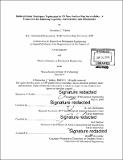| dc.contributor.advisor | Eric Rebentisch and Joel Harbour. | en_US |
| dc.contributor.author | Walker, Johnathan C. (Johnathan Clyde) | en_US |
| dc.contributor.other | Massachusetts Institute of Technology. Department of Mechanical Engineering. | en_US |
| dc.coverage.spatial | n-us--- | en_US |
| dc.date.accessioned | 2016-09-13T19:22:38Z | |
| dc.date.available | 2016-09-13T19:22:38Z | |
| dc.date.copyright | 2016 | en_US |
| dc.date.issued | 2016 | en_US |
| dc.identifier.uri | http://hdl.handle.net/1721.1/104296 | |
| dc.description | Thesis: Nav. E., Massachusetts Institute of Technology, Department of Mechanical Engineering, 2016. | en_US |
| dc.description | Thesis: S.M., Massachusetts Institute of Technology, Department of Mechanical Engineering, 2016. | en_US |
| dc.description | Cataloged from PDF version of thesis. | en_US |
| dc.description | Includes bibliographical references (pages 123-126). | en_US |
| dc.description.abstract | In a political environment of austerity, the importance of understanding the design tradeoffs for new naval ship concept designs cannot be understated. A combination of a tightened shipbuilding budget, large high-priority procurement programs, and an emphasis on affordability will require high level tradeoffs to be made in future ship programs. Understanding tradeoffs in naval ship capability and survivability for the sake of affordability early in concept ship design gives Navy leadership real options for affordable ships and reduces the likelihood of detailed design changes late in the acquisition process. In the naval ship design process capability and affordability are typical "ility" tradeoffs made in traditional tradespace exploration. Ship designers must consider survivability as a third dimension independent of capability and cost. A specific ship system can be costly and improve survivability in a design but not deliver a level of desired capability. This thesis proposes a framework based on existing methodologies to perform tradespace exploration by iteratively determining a concept naval ship design's capability, survivability, and cost across large tradespaces of thousands of concepts. The process determines an optimal set of designs using multi-dimensional Pareto-optimization methods. This thesis also demonstrates methods to navigate the space bound by the optimized set of designs so tradeoffs can be made while preserving the optimal balance of capability, survivability, and cost. Survivability-cost relationships are developed with specific design requirements to provide insight into the amount of investment required to improve naval ship survivability. Understanding capability-survivability-cost tradeoffs ultimately informs a ship designer the premium that must be paid for increased survivability for a desired level of capability. | en_US |
| dc.description.statementofresponsibility | by Johnathan C. Walker. | en_US |
| dc.format.extent | 142 pages | en_US |
| dc.language.iso | eng | en_US |
| dc.publisher | Massachusetts Institute of Technology | en_US |
| dc.rights | M.I.T. theses are protected by copyright. They may be viewed from this source for any purpose, but reproduction or distribution in any format is prohibited without written permission. See provided URL for inquiries about permission. | en_US |
| dc.rights.uri | http://dspace.mit.edu/handle/1721.1/7582 | en_US |
| dc.subject | Mechanical Engineering. | en_US |
| dc.title | Multi-attribute tradespace exploration for US Navy surface ship survivability: a framework for balancing capability, survivability, and affordability | en_US |
| dc.title.alternative | Multi-attribute tradespace exploration for United States Navy surface ship survivability: a framework for balancing capability, survivability, and affordability | en_US |
| dc.type | Thesis | en_US |
| dc.description.degree | Nav. E. | en_US |
| dc.description.degree | S.M. | en_US |
| dc.contributor.department | Massachusetts Institute of Technology. Department of Mechanical Engineering | |
| dc.identifier.oclc | 958163320 | en_US |
